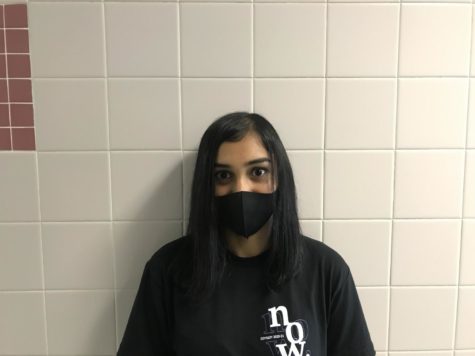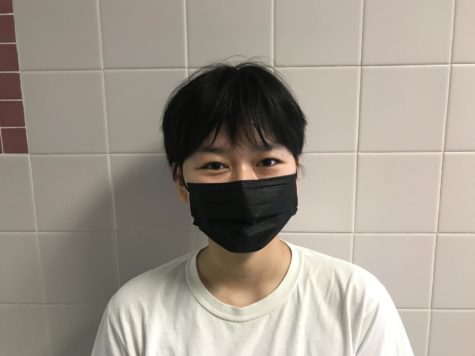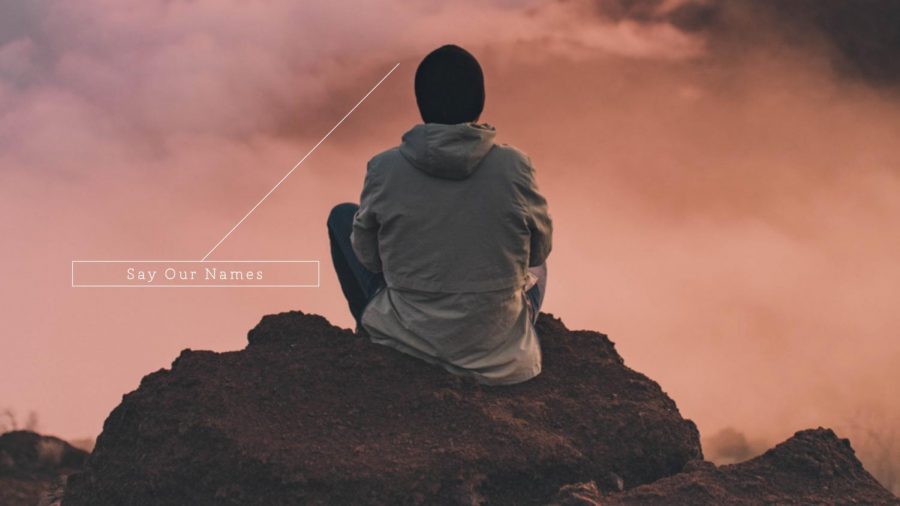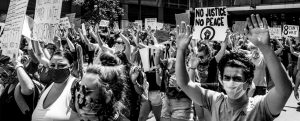Black Lives Matter Movement
The Fight for Equality Continues
After being accused of purchasing cigarettes with a counterfeit $20 bill, 46-year-old George Floyd died at the hands of the Minneapolis police on May 25. Pinned down with a knee on his neck, Floyd spent his last words repeating “I can’t breathe” and pleading for Derek Chauvin, the ex-officer now charged with third-degree murder and second-degree manslaughter, to let him get up.
Outrage consumed social media, further sparking the protests and marches that spread across the country. According to the Armed Conflict Location & Data Event Project (ACLED), 93% of Black Lives Matter (BLM) protests and demonstrations were peaceful until counterprotesters and authorities felt the need to intervene. Protests soon turned into riots as buildings were looted and destroyed, cars were lit on fire and violence ensued between cops and protesters.
#BlackLivesMatter
Emerging as a hashtag on social media, and later transforming into an international movement, Black Lives Matter first came to life in 2013. Founders Alicia Garza, Patrisse Cullors and Opal Tometi began the official Black Lives Matter group in response to the acquittal of George Zimmerman. Zimmerman shot and killed 17-year-old Trayvon Martin, who was on his way back from a convenience store. Police were called with the claim that Martin looked “suspicious.” Zimmerman continued to follow him against orders from higher officials.
“Trayvon Martin’s killer was just laid off. It keeps happening,” junior Isis Holmes said. “There’s injustice within the criminal justice system, and the Black Lives Matter movement strives to make it fairer for everyone.”
Though the hashtag became an instant trend on social media, it didn’t gain widespread attention until a year later, following the outcomes of two separate murders at the hands of police officers.
In Ferguson, Missouri, police officer Darren Wilson was cleared for the killing of unarmed teenager, Michael Brown. Wilson reportedly shot Brown six times, despite witness claims that Brown raised his hands in surrender and begged him not to shoot.
Similarly, in Staten Island, New York, 27-year-old Eric Garner was pinned to the ground by several police officers and placed in an illegal chokehold by Daniel Pantaleo in an attempt to arrest him. A video of the event showed Garner repeat the words “I can’t breathe” several times as he lay on the ground before losing consciousness. He was pronounced dead an hour later.
Pantaleo was fired from his job but not indicted, despite the medical examiner’s ruling that Garner’s death was a homicide. Though Garner’s family received monetary compensation after filing a wrongful death claim to the state, the outcome of his case sparked the first series of protests and riots against police brutality in the nation.
Between 2014 and 2016, Garza, Cullars and Tometi expanded their organization into a national network with over 30 chapters. The Black Lives Matter Global Network aims to “eradicate white supremacy and build local power to intervene in violence inflicted on Black communities” while also “working [towards] a world where Black lives are no longer systematically targeted for demise.”
“Hands up, don’t shoot.”
The phrase “Hands up, don’t shoot” became a popular slogan for the fight against police brutality after Michael Brown was shot and killed by a police officer. The numerous deaths of Black people at the hands of the police have also elicited statements such as “All Cops Are Bastards (ACAB)” and “Defund the Police,” while more radical supporters have called for the complete abolition of police.
The term ACAB, which standards for “All Cops are Bastards” may likely spark immediate shock and denial in people who are unfamiliar with the concept; however, it does not imply that every police officer in the United States is violent or prejudiced. Instead, ACAB implies that by choosing to work for a corrupt system, police officers continue to uphold racial discrimination in the U.S. criminal justice system.
Defunding the police is a proposed solution where funds, currently allocated to the police force, would be redistributed to other forms of public support. This ranges from other government agencies, such as education and social services, to directly funding underprivileged colored communities.
“In any group of people, there are bound to be good and bad people; however, the policing culture makes the [number of] bad people more prevalent,” senior Sarah Elobaid said. “Some elements of this culture [include] racism, abuse of power and a lack of accountability and discipline. The police are here to serve their citizens, not subject them to their power.”
Multiple factors can explain why police officers may be quick to resort to brute force in cases involving minorities, such as racial bias and improper training.
According to a study conducted by APM Reports in 2015, 34 states have the freedom to choose what kind of training officers must go through, with de-escalation tactics being the most neglected skill in comparison to firearm training. Across the country, 280 law enforcement agencies have police officers train an average of 58 hours on using firearms and only eight hours on de-escalation and communication. Thirty-four states, including Virginia, do not require de-escalation training and only eight states began to make it a requirement after the shooting of Brown in Ferguson. Because they are taught to expect the worst possible scenario, the inadequate training officers receive prevents them from taking the time to communicate with people in crisis and instead act out in self-defense.
Research and anecdotal evidence also concludes that racial discrimination is present in law enforcement tactics employed by U.S. police. According to a 2019 Center Survey conducted by the Pew Research Center, 84% of Black adults believe they are treated more unfairly than their White counterparts while interacting with police. 63% of White people agreed.
“Dark skin is associated with negative stereotypes and connotations that [say] they’re mean, they’re thugs and they’re criminals,” Holmes said. “Those with darker skin are subjected to harsher consequences and policing in society. I have a 4-year-old brother. I don’t want him to feel like he can get killed just for his skin color.”
#SayTheirNames
As the list of Black men and women killed by police officers grows, so does the fight for racial equality. In 2015, #SayTheirNames was created so that people would remember the names and faces of every Black person whose life was taken due to racial injustice.
“The stories of victims of police brutality have angered and disgusted me, but they have left me with such a great deal of passion and motivation to continue fighting,” Elobaid said. “Of course it is hard to watch all the horrific acts committed by police brutality, but I believe one of the first steps to fighting and demolishing this injustice is to face the hard reality of what the Black community has been and is continuing to face.”
Recently, BLM activists have shown their support for a plan of action against police brutality known as “Campaign Zero.” This new set of policies was put forth by We the Protestors, an organization working toward ending racism and police violence in the U.S.. The policies are organized into categories such as community representation, limiting the use of force, body cams for police, and training.
In the wake of George Floyd’s death, the Black Lives Matter movement gained a new surge of momentum as a mass of activists joined the cause to fight back against the racist institutions commonplace in society and the government’s failure to protect the Black community. According to the New York Times, polls suggest that in June of this year, approximately 15 to 26 million protesters around the country showed their support for the cause on the streets. This would make Black Lives Matter one of the largest movements in U.S. history.
Your donation will support the student journalists of Chantilly High School. Your contribution will allow us to cover our printing and annual website hosting costs.

Shivani Sethu is a senior and the managing editor of The Purple Tide. She enjoys playing and listening to music, as well as hanging out with her dog, Jessie...

Irene Si is a senior and this is her fourth year with the Purple Tide. She’s also a tutor at the school’s Writing Center. In her free time, she loves...




Kyra • Jan 19, 2021 at 12:42 pm
Good article, it was very thought provoking and i enjoyed reading it.